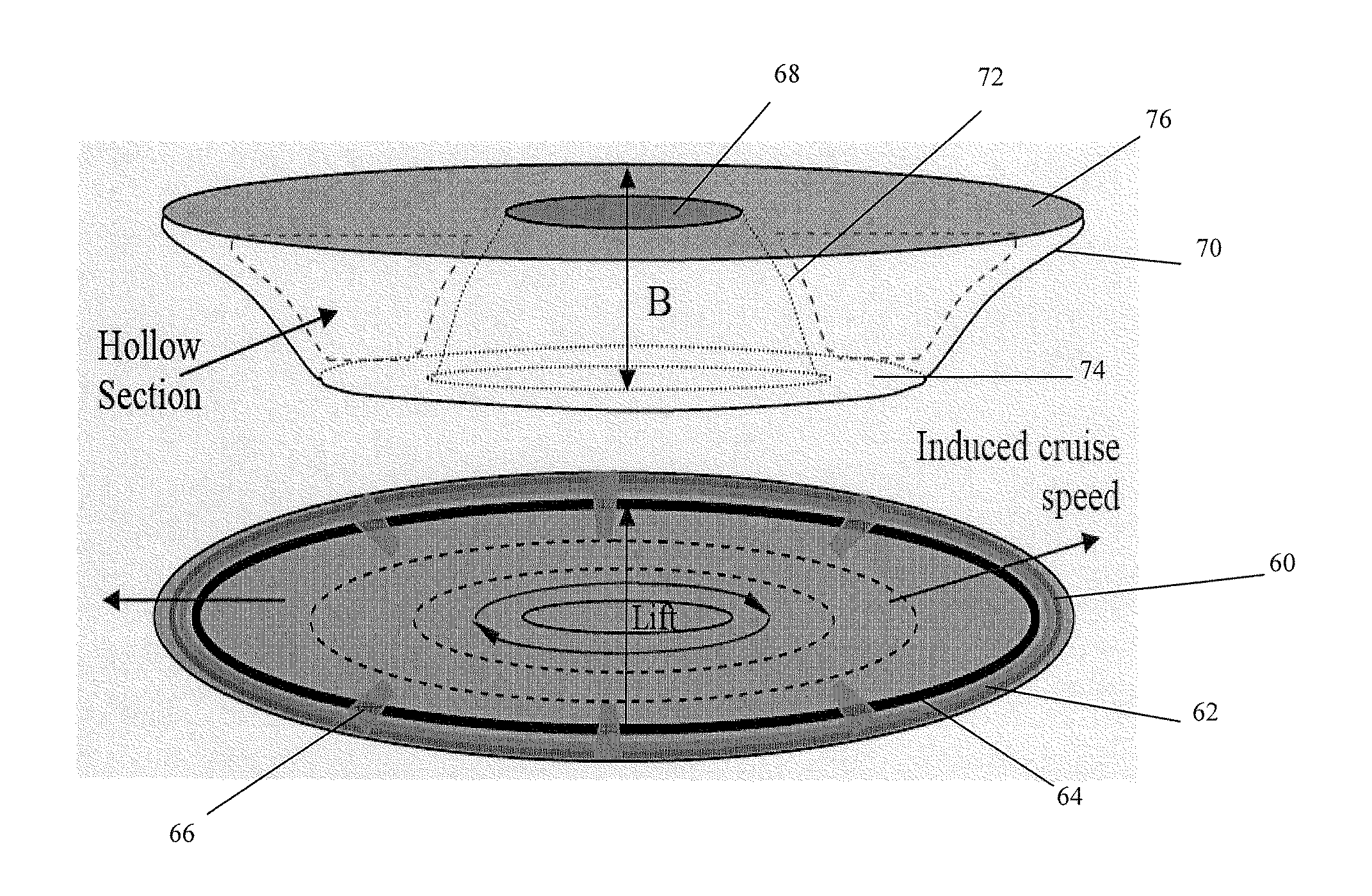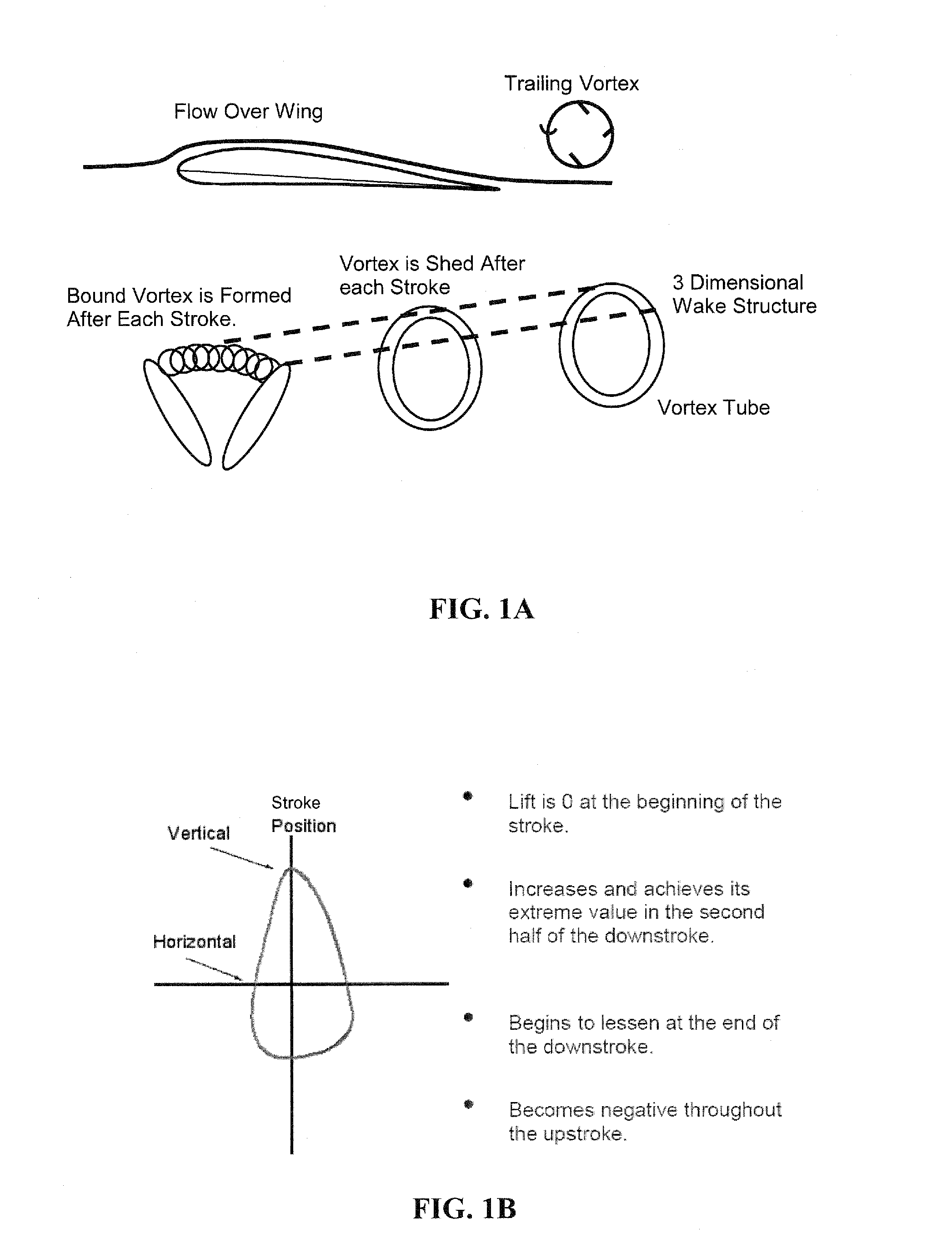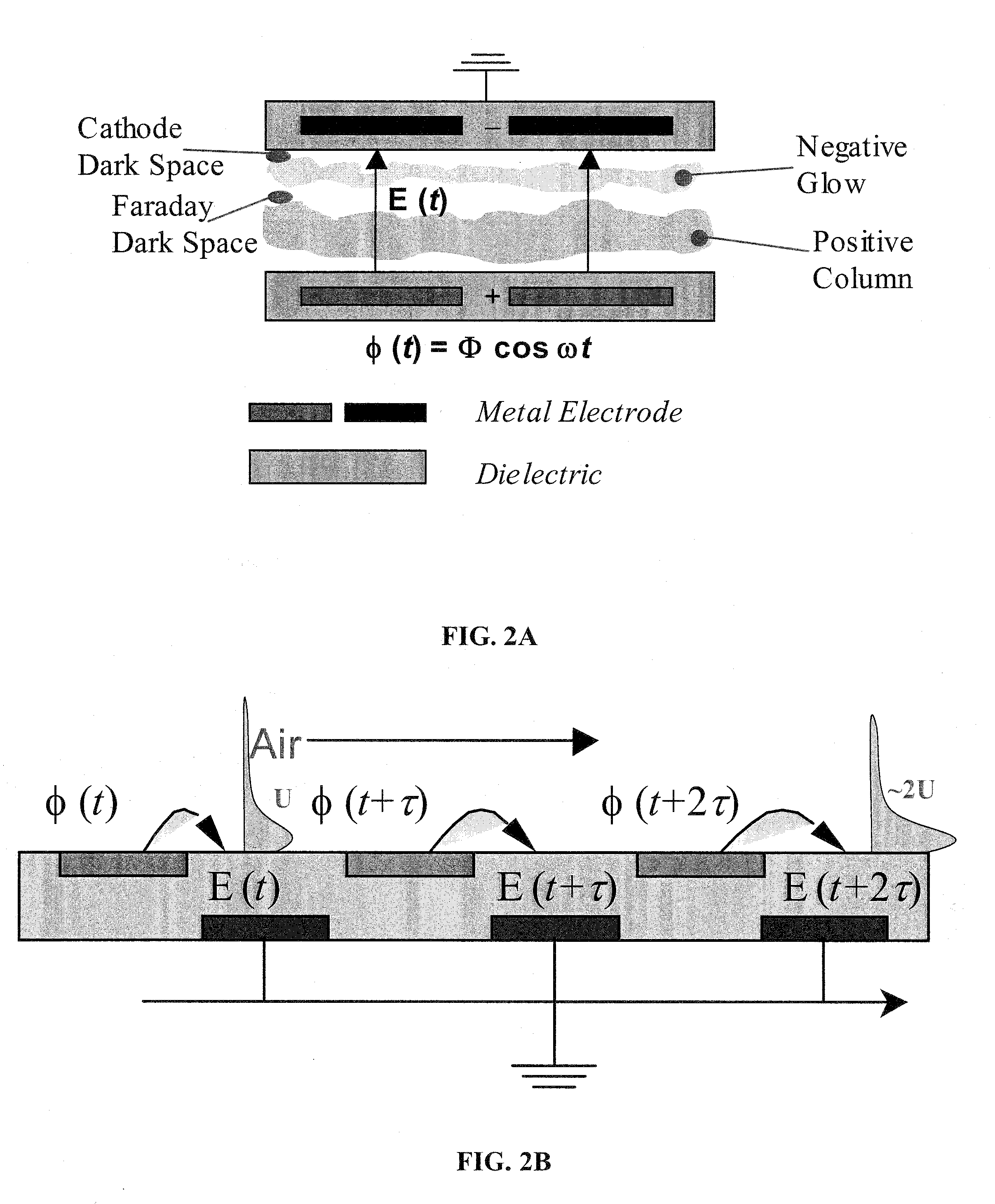Wingless Hovering Of Micro Air Vehicle
a micro-air vehicle and wingless technology, applied in the direction of machines/engines, vertical landing/take-off aircraft, airflow influencers, etc., can solve the problems of unsteady magnitude of lift force, serious limitation of the hovering capability of a mav using a flapping rigid wing, and easy disruption of lift generated by rigid flapping wings, so as to reduce the load from wind, reduce the effect of lift to drag ratio and degradation of airfoil efficiency
- Summary
- Abstract
- Description
- Claims
- Application Information
AI Technical Summary
Benefits of technology
Problems solved by technology
Method used
Image
Examples
Embodiment Construction
[0033]Embodiments of the subject invention relate to a Wingless Hovering Micro Air Vehicle (WHOMAV). Embodiments of the WHOMAV can incorporate a Power Source Unit (PSU), which can include, for example, batteries, or other appropriate power sources known in the art. Embodiments can operate at reasonable power levels for hovering and withstanding expected wind gusts. Embodiments of the subject invention can have a diameter less than 15 cm. Embodiments can have one or more smooth (continuous curvature) surface and can be operated using electromagnetic and / or electrohydrodynamic principles. The wingless design of specific embodiments can allow operation with no rotating or moving components. Additional embodiments can allow active response to the surrounding flow conditions. The issue of low lift to drag ratio and degradation of airfoil efficiency due to the inability of laminar boundary layers attachment can also be significantly reduced, or eliminated. The electromagnetic force can be...
PUM
 Login to View More
Login to View More Abstract
Description
Claims
Application Information
 Login to View More
Login to View More - R&D
- Intellectual Property
- Life Sciences
- Materials
- Tech Scout
- Unparalleled Data Quality
- Higher Quality Content
- 60% Fewer Hallucinations
Browse by: Latest US Patents, China's latest patents, Technical Efficacy Thesaurus, Application Domain, Technology Topic, Popular Technical Reports.
© 2025 PatSnap. All rights reserved.Legal|Privacy policy|Modern Slavery Act Transparency Statement|Sitemap|About US| Contact US: help@patsnap.com



